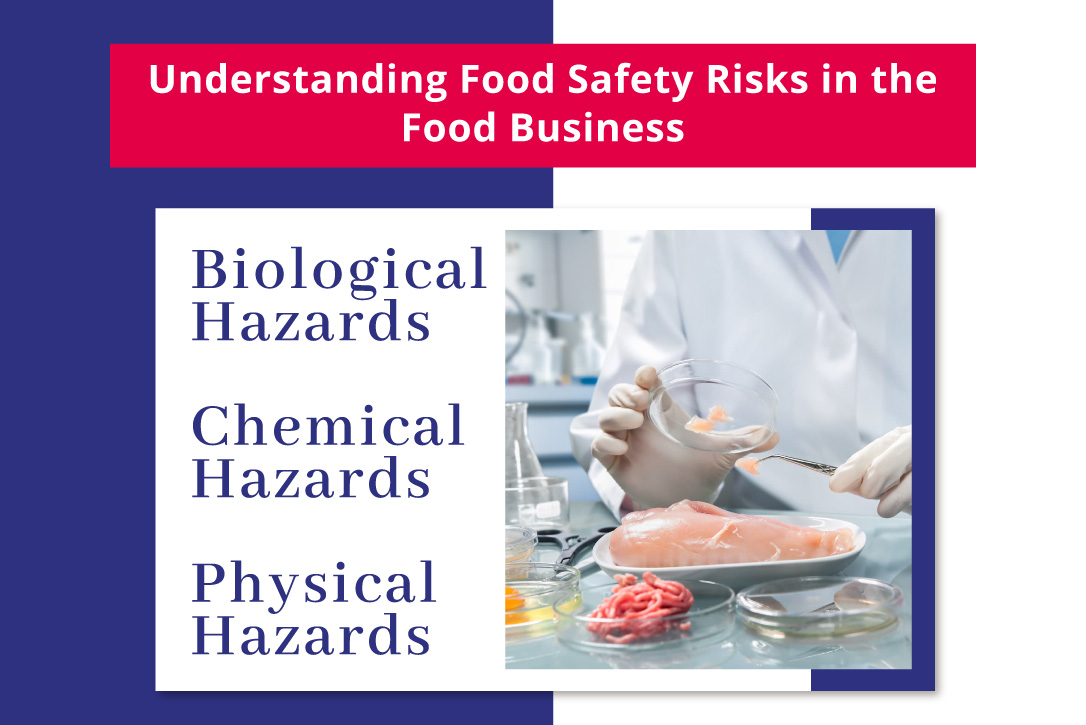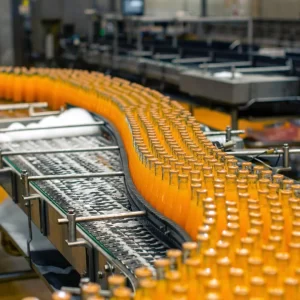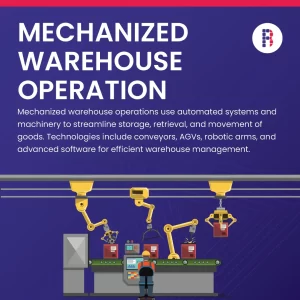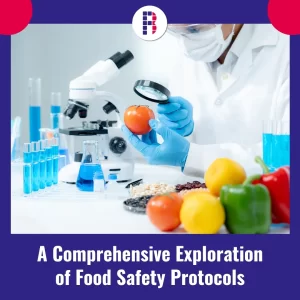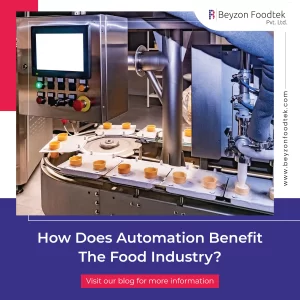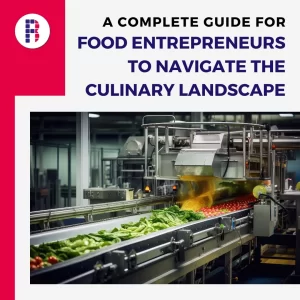Introduction:
The food industry is a complex web of processes, from sourcing ingredients to serving delectable dishes to consumers. Within this intricate system, various food safety risks lurk, posing potential threats to both public health and the reputation of food businesses. In this exploration, we will delve into three types of food safety risks and identify common culprits that businesses must be vigilant about to ensure the safety of the food they produce.
- Biological Hazards: The Silent Threats
Biological hazards are among the most critical and challenging food safety risks to manage. They involve the contamination of food products by harmful microorganisms, such as bacteria, viruses, parasites, and fungi. Common culprits that contribute to biological hazards include poor hygiene practices, improper handling of raw ingredients, and inadequate cooking or storage temperatures.
Common Culprits:
- Cross-Contamination:
Cross-contamination occurs when harmful microorganisms from one source are transferred to another, often through contact surfaces, utensils, or unwashed hands. For instance, if a cutting board used for chopping raw chicken is not properly cleaned before chopping vegetables, there is a risk of transferring bacteria like Salmonella or Campylobacter to the vegetables. - Inadequate Cooking or Cooling:
Insufficient cooking temperatures or improper cooling methods can lead to the survival and proliferation of harmful bacteria. For example, undercooked poultry or seafood may contain pathogens that can cause foodborne illnesses. Likewise, if hot foods are not rapidly cooled to safe temperatures, bacteria can multiply, posing a risk to consumers. - Poor Personal Hygiene:
Employees with poor personal hygiene practices can introduce biological hazards into the food production process. Failure to wash hands thoroughly, wear appropriate protective gear, or stay home when ill can contribute to the spread of harmful microorganisms. Proper training and strict adherence to hygiene protocols are crucial to mitigating this risk.
- Chemical Hazards: The Unseen Perils
Chemical hazards involve the presence of harmful chemicals in food products, either naturally occurring or introduced during the production process. These hazards can result from pesticide residues, food additives, contaminants, or improper use of cleaning agents. Common culprits that contribute to chemical hazards include inadequate supplier controls, improper storage of cleaning agents, and unintentional cross-contamination.
Common Culprits:
- Improper Use of Cleaning Agents:
The use of cleaning agents and sanitizers is essential for maintaining a hygienic food production environment. However, if these chemicals are not used according to recommended guidelines or if residues are not thoroughly rinsed, they can end up contaminating food. Training staff on the correct use of cleaning agents and ensuring proper rinsing procedures can minimize this risk. - Inadequate Supplier Controls:
Food businesses often rely on a complex network of suppliers for ingredients. If suppliers do not adhere to stringent quality control measures, there is a risk of receiving ingredients contaminated with pesticides, heavy metals, or other harmful substances. Implementing robust supplier vetting processes and regularly testing incoming ingredients can help mitigate this risk. - Allergen Mismanagement:
For individuals with food allergies, the mismanagement of allergens poses a severe threat. Cross-contact between allergens and non-allergenic foods, either during storage, preparation, or serving, can lead to allergic reactions. Clear labeling, comprehensive staff training, and dedicated areas for allergen-free food preparation are crucial measures to prevent allergen-related incidents.
- Physical Hazards: The Visible Dangers
Physical hazards involve the presence of foreign objects in food that can cause harm if ingested. These hazards can range from small particles like glass or metal to larger objects like bones or plastic. Common culprits that contribute to physical hazards include inadequate quality control measures, subpar equipment maintenance, and insufficient training of staff on safety protocols.
Common Culprits:
- Inadequate Equipment Maintenance:
Equipment used in food processing, such as grinders, mixers, and slicers, can pose a risk if not properly maintained. Wear and tear on machinery may result in fragments breaking off and contaminating food products. Regular inspections, maintenance schedules, and immediate repairs are essential to prevent physical hazards originating from equipment. - Insufficient Quality Control Measures:
Quality control measures are crucial for identifying and removing products with potential physical hazards before they reach consumers. Inadequate inspection processes or the lack of screening mechanisms can lead to the inadvertent inclusion of foreign objects in food items. Implementing rigorous quality control protocols and investing in advanced screening technologies can mitigate this risk. - Poor Training and Awareness:
The human factor plays a significant role in preventing physical hazards. Staff who are not adequately trained to identify and address potential hazards may inadvertently contribute to the problem. Training programs that emphasize the importance of vigilance, thorough inspections, and immediate reporting of any anomalies can help reduce the risk of physical hazards.
Conclusion:
Navigating the intricate landscape of the food business requires a comprehensive understanding of the diverse food safety risks that may arise. By recognizing and addressing the common culprits associated with biological, chemical, and physical hazards, food businesses can take proactive steps to ensure the safety of their products. Vigilance, proper training, and adherence to stringent quality control measures are the cornerstones of a successful strategy to mitigate food safety risks and uphold the highest standards of consumer protection. In a world where trust in the food supply chain is paramount, the commitment to food safety is not just a regulatory requirement but a fundamental responsibility for every player in the food industry.
